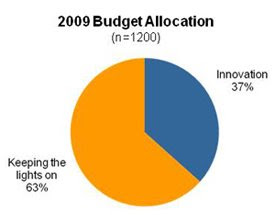Aster, Redwood City, Calif., this week rolled out the first-ever
That's a big promise and one that, if it pans out, may indeed ripple through the $20 billion-plus data warehousing industry, of a few hot growth areas in IT. Only about 10 percent of data warehousing deployments are at the high-end, opening a potentially large market for Aster and its supplier brethren to win over on value-oriented offerings in the mid-market.
Should Oracle Be Worried?
Should Netezza and Teradata be scrambling to roll out a lower cost solution to compete with a scrappy Aster? Teradata has been seeing some wins lately – the State of Ohio, Ruby Tuesday, Hunan Telecom and RealNetworks are some of its newest clients. Netazza has also picked up a few new clients, including WIND Telecom, Esselunga, and Telcel. Oracle, of course, is serving much of the Fortune 500. A recent Forrester report put Teradata, Oracle, IBM and Microsoft at the head of the market, with Netezza, Sybase and SAP noted for niche deployments.
Other warehouse solutions are also being driven into the market, by such vendors as Greenplum. [Disclosure: Greenplum is a sponsor of BriefingsDirect podcasts]. At the higher end of appliances, Oracle and HP teamed up last year on the Exadata appliance for Oracle warehouse workloads. [Disclosure: HP is a sponsor of BriefingsDirect podcasts]. If the Oracle buy of Sun goes through, we may see other appliance and warehouse packing permutations from Oracle.
For now, Aster is coming out with its lower-cost competitive solution dubbed MapReduce Data Warehouse Appliance – Express Edition. Aster is seeking to level the playing field on the data warehousing entry front, and that message should resonate well with companies that need an entry-level solution that doesn’t compromise on power. Aster – and it won’t be alone -- clearly sees a sweet spot with companies that are value-conscious and growth-minded.
“The Aster MapReduce Data Warehouse Appliance changes the
The Big Data Trend
The “Big Data” trend is growing. Although most data warehouses are still under one terabyte, Aster is betting more companies are beginning to see the light on the need for a viable database platform to scale and provide high-speed analysis. MPP data warehouses are often regarded as the most scalable, best analytic performance, highest availability, and most flexible in the data warehousing world. The problem is cost, and complexity of the manpower needed to wring the value from such systems. Many organizations can’t afford a high-end MPP data warehouse or appliances, or find the staff to man them.
Data volumes and complexity continue to explode, and we can expect more as unstructured web data, mobile device data and the need for better BI into dynamic markets to continue to meld into a thorny data management problem. Appliances fit the bill well due to the ability to directly tune the software specifically to the workload (and hardware platform), and further best exploit parallelism and MapReduce approaches.
Throw another monkey wrench into the mix: I expect to see more “data warehouse as a service”-type entries, whereby the entry level moves to the cloud.
Data volumes and complexity continue to explode, and we can expect more as unstructured web data, mobile device data and the need for better BI into dynamic markets to continue to meld into a thorny data management problem.
Remember batch outsourced processing? What’s the difference? Cloud-based warehousing also sets up the ability to mix and match data set joins in the cloud in novel BI extraction and analytics tag-teams. It’s not so far-fetched and could produce a whole new reason to get your data (or subsets or metadata instances) into a/the cloud.This week, Aster is pushing the on-the-ground deployment envelope with the MapReduce Data Warehouse Appliance Express Edition on general warehouse productivity and applicability. Aster’s secret sauce is its approach to parallelism in the data warehouse, the company says. The way Aster goes at parallelism makes it possible to for the data warehouse to run on commodity-grade hardware, albeit with aforementioned appliance tuning.
The appliance pre-packages the Aster nCluster analytic database software on Dell hardware and gives companies the option to include MicroStrategy’s BI software for up to one terabyte of user data. That's an attractive bundle for the small- to mid-sized business. Aster promises significant improvement in analysis speeds by leveraging a MPP architecture – even for smaller data warehouses.
Aster isn’t leaving large enterprises out of the cost-savings equation, of course. The company also launched Aster MapReduce Data Warehouse Appliance – Enterprise Edition in sizes ranging from one terabyte to one petabyte of data.
(BriefingsDirect contributor Jennifer LeClaire provided editorial assistance and research on this post. She can be reached at http://www.linkedin.com/in/jleclaire and http://www.jenniferleclaire.com.)










